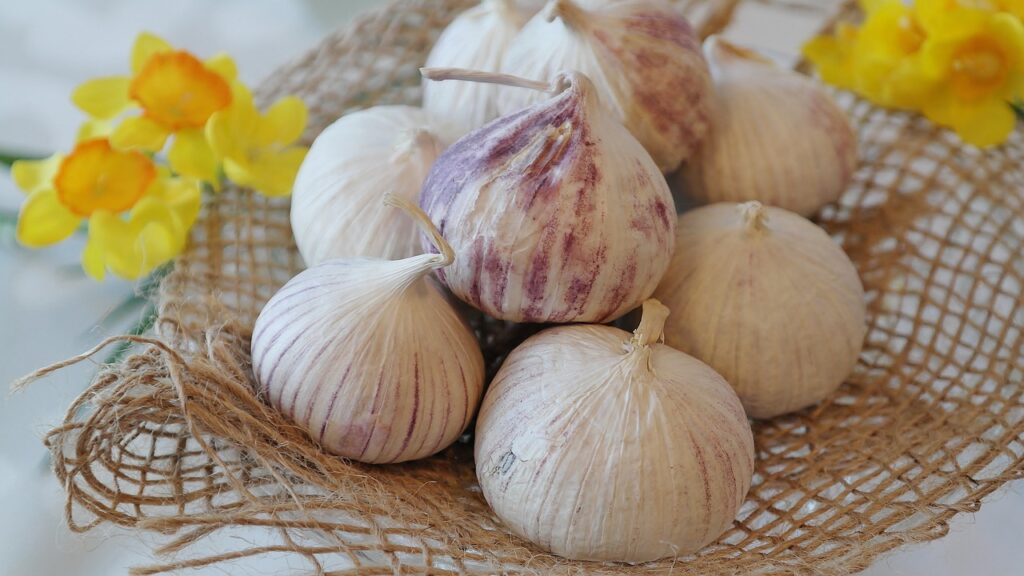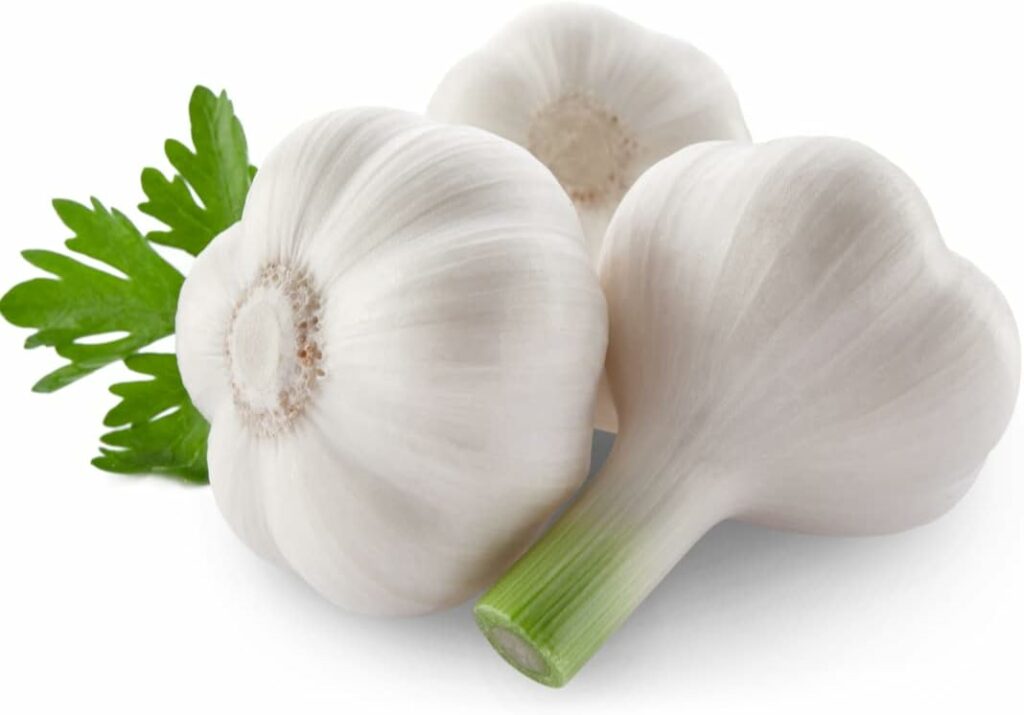10 Surprising Facts About the World’s Oldest Medicinal Plant: Garlic
A medicinal plant recognised as a superfood, garlic continues to surprise us with its versatility and potency. We curated 10 Surprising facts about the world's oldest medicinal plant: garlic

When you have friends coming for diner, the first reaction is be to avoid garlic. But if I would tell you that garlic is the world’s oldest medicinal plant? Garlic is not only a culinary staple and health gut-booster, but it also has some intriguing qualities that might surprise you and your friends. Do you know that garlic was used by Olympic athletes in ancient Greece? Here are 10 fascinating facts about garlic that go beyond its flavour and medicinal properties:
1. Garlic is a Member of the Lily Family
Garlic is often associated with onions, garlic belongs to the same botanical family as lilies (Liliaceae), which includes other well-known herbs like leeks, chives, and shallots. This family of plants is known for its strong aromatic properties and health benefits.
2. The World’s Oldest Known Medicinal Plant
Garlic is believed to be one of the oldest cultivated plants used for medicinal purposes. Ancient texts from the Sumerians, Egyptians and Greeks document its use as early as 3000 BC. Egyptian medical papyri described garlic remedies for a wide range of ailments, from headaches to heart disease.
3. Garlic Can be Absorbed Through the Skin
The sulfur compounds in garlic are so potent that if you rub a clove on the bottom of your foot, the garlic scent can travel through your bloodstream, and you might even taste it in your mouth! This is because compounds like allicin are easily absorbed and travel through the body rapidly.
4. Garlic is Rich in Vitamins and Minerals
While garlic is often prized for its flavour, it’s also packed with essential nutrients. A single clove of garlic contains manganese, vitamin B6, vitamin C, selenium, calcium, potassium, and iron. It may not be a large serving, but these nutrients make garlic a powerhouse addition to any meal.
5. Garlic Has More Vitamin C Than Oranges (Per 100g)
It’s not common knowledge, but garlic contains a significant amount of vitamin C. While people think of citrus fruits as the best source of this immune-boosting vitamin, garlic, per 100g, actually has more vitamin C than oranges.
Of course, we don’t eat garlic in such large quantities, but even small amounts can contribute to your vitamin C intake.
6. China is the Largest Producer of Garlic
China dominates garlic production worldwide, producing about 80% of the global supply. In fact, garlic from China is so prevalent that it can be hard to find locally grown varieties in some regions. The country produces 23 million metric tons of garlic annually. Shandong, known as “the world’s garlic capital” is an eastern coastal province, located to the south-east of Beijing.
7. Garlic Can Help Reduce Heavy Metal Toxicity
One of garlic’s lesser-known benefits is its ability to protect against heavy metal toxicity. Studies have shown that garlic supplementation can reduce lead and mercury levels in the body by binding to these metals and facilitating their excretion. Garlic’s high sulphur content plays a crucial role in this detoxification process.
8. There are Over 300 Varieties of Garlic
Garlic isn’t a one-size-fits-all plant. There are hundreds of varieties, ranging from mild to incredibly pungent. The two main types are softneck and hardneck garlic, with softneck varieties being the most common in grocery stores.
Hardneck garlic is prized by gourmet chefs for its complex flavour, while black garlic is a fermented variety known for its sweet, umami-rich taste. Black garlic is a type of aged garlic of East Asian origin. It is made by placing garlic through a process that produces black cloves, in a warm, moist environment over the course of several weeks.
9. Garlic Improves Cholesterol Levels
Garlic has been studied for its heart health benefits, particularly its ability to reduce total and LDL (bad) cholesterol. According to a study published in the Journal of Nutrition, consuming garlic regularly can help reduce LDL cholesterol by 10-15%, lowering the risk of heart disease. It’s also been linked to improved blood pressure control.
10. Garlic Was Used as a Wartime Medicine
During World War I and II, when antibiotics were in short supply, garlic was used as an antiseptic to treat wounds and prevent gangrene. Known as “war penicillin” after WWII, garlic was applied to wounds to stave off infection due to its strong antibacterial properties. Even though modern medicine has advanced, the antimicrobial power of garlic is still respected today
Garlic’s long history, rich nutrient profile and proven health benefits make it more than just a seasoning. A medicinal plant recognised as a superfood, garlic continues to surprise us with its versatility and potency. Whether you use it for flavour or health, we hope you will share the surprising facts about garlic, the “stinking rose” with your next guests over dinner!
Do you want to share your story and inspire our readers ? Know that YOUR EXPERTISE is paving the way for a fairer, happier society.








